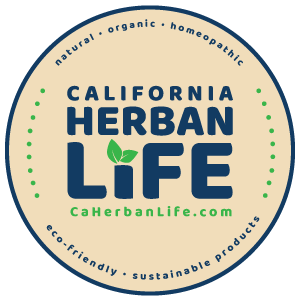With the holiday season on the horizon, chances are you’ll be adding some kind of cranberry to your grocery list in the coming months. Canned cranberries, cranberry sauces, and the raw fresh fruit are popular this time of year, while cranberry juice is a year-round standby used with the aim of treating various ailments.
Nutrition Facts of Cranberries
Cranberries consist primarily of water, but they also contain carbohydrates and fiber. According to the U.S. Department of Agriculture (USDA), 1 cup of whole raw cranberries has 46 calories, 12 grams (g) of carbohydrates, and 3.6 g of dietary fiber, covering nearly 13 percent of the daily value (DV) for fiber. That serving of cranberries also has 14 milligrams (mg) of vitamin C, which is about 15 percent of the DV, and 1.3 mg of vitamin E, for 9 percent of the DV, according to the National Institutes of Health.
Cranberry juice made from concentrate offers about 70 calories per 8 ounces, plus 18 g of carbs and 26 percent DV of vitamin C, but no fiber, per the USDA.
There are many other cranberry products, such as canned cranberry sauce and dried cranberries. The nutritional profile, including flavonoid content, changes depending on the product and its preparation method. Flavonoids are natural substances with antioxidant and anti-inflammatory properties, according to a review published online in December 2016 in the Journal of Nutritional Science. Another study analyzed flavonoid content differences in fresh cranberries, freeze-dried berries, cranberry juices, cranberry sauces, and dried cranberries. The researchers found that the less processed the products were (as in homemade cranberry sauce versus store-bought), the higher the flavonoid levels.
Health Benefits of Cranberries
Cranberries have been used in folk remedies to treat disorders involving the bladder, stomach, and liver, as well as diabetes and wounds.
Here are some potential cranberry benefits:
Preventing Urinary Tract Infections (UTIs)
Cranberry juice is often said to help with UTIs, a common bacterial infection. Research shows that there’s some truth here — they do seem to protect against recurring UTIs. A meta-analysis published in December 2017 in The Journal of Nutrition involving participants who had a history of UTIs found that cranberry reduced the risk of a recurring UTI by 26 percent. Nonetheless, more studies are needed to understand the reason for this benefit.
“It is likely that compounds in cranberries help keep bacteria from adhering to surfaces in the bladder,” says Kelly Jones, RD, CSSD, a sports dietitian based in Philadelphia. Cranberry juice works better as a preventive measure than as a treatment, according to the University of Rochester Medical Center. The science is mixed, though. Earlier research found that drinking cranberry juice daily didn’t significantly reduce UTI risk.
Improving Heart Health
A limited but growing body of research has shown that consuming cranberries may positively affect cardiometabolic health, including blood pressure and serum lipid profiles, according to a study published in July 2016 in Advances in Nutrition. Cranberries may also positively affect cholesterol levels and have been shown to reduce cardiometabolic risk factors, according to a review published in November 2020 in the Journal of the Science of Food and Agriculture.
Warding Off Kidney Stones
Some people have linked cranberries and kidney stones. The idea stems from the fact that cranberries contain the molecule oxalate, which can sometimes stick together and form a kidney stone, according to the National Kidney Foundation. In reality, though, cranberries don’t seem to be to blame. The foundation doesn’t list cranberries as foods that are especially high in oxalate, and what’s more, a study published in American Family Physician noted that cranberry juice can make urine more acidic, which may help prevent stones in the first place.
Additional Benefits of Cranberries
Cranberries and cranberry juice have also been linked to other health benefits, including increased sex drive, constipation relief, and treatment for yeast infections and upper respiratory infections, but the research surrounding each of these is murky.
Weight Loss Effect of Cranberries
While cranberries have loads of health benefits and are part of a nutrient-rich diet, they haven’t been tied to weight loss specifically. “Research has not been conducted on weight responses to cranberry juice,” Jones says.
How to Select and Store Cranberries
You’ll usually find cranberries in packages, but if you do have a chance to choose your own, you can try a simple trick to ensure they’re fresh. “A classic way people test cranberry ripeness is a bounce test,” says Julie Harrington, RD, a registered dietitian, chef, and author of The Healing Soup Cookbook who’s based in Morristown, New Jersey. “Ripe cranberries have little air pockets, giving them a little bounce as opposed to totally squishing.”
You can store fresh cranberries in your refrigerator for up to one month or in the freezer for up to one year. Dried cranberries should be kept in a tightly sealed package in the pantry and should be consumed by the best-by date on the package.
When shopping for cranberry juice, look for the variety with the least amount of added sugar, Harrington advises. And keep in mind that a serving size for a glass of juice is smaller than you might think. Pour only 4 ounces (½ cup) if you’re opting for cranberry juice, she says. Jones also recommends enjoying the juice with a meal or a substantial balanced snack to blunt the blood sugar response.
How to Eat Cranberries
Most of the time, you’ll encounter cranberries that have been cooked, canned, or put into a juice or tea. But they’re more versatile than most people give them credit for and can be eaten dried and sprinkled on top of salads, be juiced, and even be eaten raw, whether by tossing a few into a salad, oatmeal, or yogurt, or by turning them into a relish, Harrington says.
Be warned, though: “Raw cranberries are tart,” Harrington says. So eating them raw might not jive with your taste buds.
There are also oral capsules of concentrated cranberry extract, so you may be able to tap into some of the health benefits even if you’re not a fan of the taste. (10) A study published in September 2016 in International Urology and Nephrology found that taking cranberry extract for 12 weeks helped prevent recurrent UTIs.
Cranberry Recipes
Get your cranberry fix by cooking up one of these six recipes:
- Delight in the orange and cranberry flavors packed into these Fluffy Cranberry Orange Muffins.
- Pile all of your fall favorites into a salad with this Roasted Butternut Squash Winter Salad with Kale, Farro, and Cranberry Dressing.
- Sip a healthy and festive Cranberry Smoothie.
- Whip up a classic Homemade Cranberry Sauce with only six ingredients.
- Update your go-to salad for fall with the Best Shredded Kale Salad.
- Wake up to a bowl full of hearty and healthy Cranberry Walnut Cookie Overnight Oats.
Other Uses for Cranberries
Because of the antibacterial effects of cranberries, they’re sometimes used in mouthwash. A study published in 2015 in the Journal of Indian Society of Pedodontics and Preventative Dentistry found that mouthwash containing cranberry extract reduced the presence of the Streptococcus mutans bacteria more significantly than a placebo. Streptococcus mutans are acid-producing bacteria that can colonize on the surface of teeth and cause damage, according to a paper published in Nutrients.
Great details from Everyday Health




